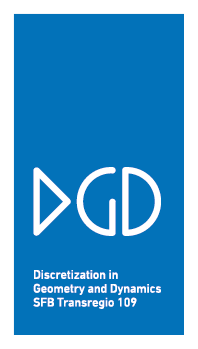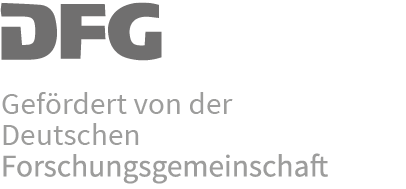One point of departure of this project is a construction of Gelfand, Kapranov, and Zelevinsky (GKZ) that associates to any point configuration $V=\{P_{1},\ldots,P_{n}\}\subset\mathbb{R}^{d}$ a convex polytope in $\mathbb{R}^{n}$ and its normal fan, called the secondary polytope and the secondary fan of $V$. This project is concerned with an analogous construction for point configurations in Riemann surfaces, which will be explained later.
The GKZ construction of the secondary fan can easily be explained in terms of height functions and convex liftings. Raise each of the points $P_{k}\in\mathbb{R}^{d}$ to $(P_{k},h_{k})\in\mathbb{R}^{d}\times\mathbb{R}$. The lower convex hull of the raised points projects to a polytopal subdivision of $conv(V)$ whose vertex set is contained in $V$. This associates to each height function $h\in\mathbb{R}^{V}$ a convex lifting and, by projection, a polytopal subdivision of $conv(V)$. Not all polytopal subdivisions can be obtained in this way; those subdivisions that come from convex liftings are called coherent (or regular). The set of height functions that induce a particular coherent subdivision $\Delta$ is a (relatively open) convex polyhedral cone in $\mathbb{R}^{n}$, the secondary cone of $\Delta$. The set of all secondary cones, one for each coherent subdivision, forms the secondary fan of $V$. The partial ordering of the (closed) secondary cones of $V$ by inclusion is anti-isomorphic with poset of all coherent subdivisions of $V$. In particular, the maximal cones correspond to the most refined subdivisions, the triangulations.
The GKZ construction of secondary fans can be adapted to point configurations $V=\{P_{1},\ldots,P_{n}\}$ in a compact Riemann surface $M$. There are at least two natural ways to do this: either with marked points or with punctures.
Riemann surfaces with marked points. The most straightforward approach is to equip $M$ with a conformal metric of constant curvature. To fix ideas, let us assume that the genus of $M$ is at least two, so the metric is hyperbolic. The notion of weighted Delaunay tessellations carries over almost without change. The construction of Gelfand, Kapranov & Zelvinsky (raising points and taking convex hulls) carries over as follows: Use the hyperboloid model of the hyperbolic plane, $H^{2}=\{x\in\mathbb{R}^{2,1}: \langle x,x\rangle=-1, x_{3}>0\}$, and realize the hyperbolic surface as the quotient space $M=H^{2}/\Gamma$ of its universal cover $H^{2}$ by the group $\Gamma<SO^{+}(2,1)$ of deck transformations. Each $P_{k}\in V$ corresponds to an orbit $\Gamma x_{k}$ for some representative $x_{k}\in H^{2}$. For each $w\in\mathbb{R}_{\geq 0}^{n}$, $w\not=0$, the convex hull of the union of orbits $\Gamma(w_{k}^{-1}x_{k})$ is a $\Gamma$-invariant convex polytope. Its boundary induces a geodesic cell decomposition of $M$ with vertices in $V$. The sets of weights $w$ leading to a particular decomposition are relatively open polyhedral cones that form the secondary fan of the Riemann surface with marked points $(M,V)$. Their union is $\mathbb{R}_{\geq 0}^{n}\setminus\{0\}$. The cases when $M$ is a sphere or a torus can be treated similarly.
Punctured Riemann surfaces. In this project we will mostly follow a different approach involving the construction of Epstein and Penner, which is peculiar to hyperbolic geometry. Consider the punctured Riemann surface $M\setminus V$, equipped with the unique complete hyperbolic metric of finite area. (If $M$ is the sphere, we have to assume $n\geq 3$ for such a hyperbolic metric to exist.) Each point $P_{k}\in V$ corresponds to the ideal point of a cusp of the hyperbolic surface. When the surface is realized as quotient $H^{2}/\Gamma$ as in the previous paragraph, each point $P_{k}$ corresponds to an orbit $\Gamma(\mathbb{R}_{>0} x_{k})$ of rays $\mathbb{R}_{>0} x_{k}$ in the positive light cone, i.e., each $x_{k}$ is a future-pointing light-like vector. For each $w\in\mathbb{R}_{\geq 0}^{n}$, $w\not=0$, the convex hull of the union of orbits $\Gamma(w_{k}^{-1}x_{k})$ is a $\Gamma$-invariant convex polytope. Its boundary induces an ideal polygonal decomposition of $M$ with vertex set $V$. (The details of this construction were worked out by Epstein and Penner.) The sets of weights $w$ leading to a particular decomposition are relatively open polyhedral cones that form the secondary fan of the punctured Riemann surface $M\setminus V$. Their union is $\mathbb{R}_{\geq 0}^{n}\setminus\{0\}$. These constructions have yet to be worked out in full detail. For instance, the maximal secondary cones will not necessarily correspond to triangulations.






